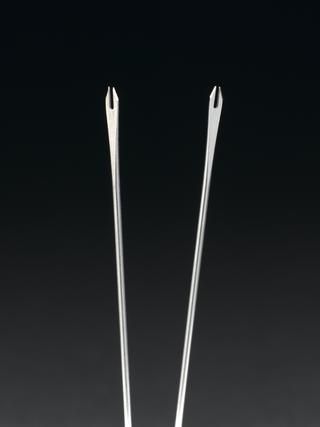
Tine tester to test for exposure to tuberculosis causing bacteria, London, England, 1945-1955
- maker:
- Allen & Hanburys Limited

Tine tester for tuberculin sensitivity, stainless steel, by Allen and Hanburys of London, c. 1950
A tine test is used to see whether a person has already been exposed to the bacteria that cause tuberculosis. The six needles were sterilised, dipped into tuberculin, and used to puncture the skin. If a red hard area appears, this indicates that the person has been exposed in the past or present to the bacteria. This suggests they either have the disease, are naturally immune or have acquired immunity to it in some way. Today, a tine gun has four prongs and is disposable for reasons of hygiene.
Details
- Category:
- Public Health & Hygiene
- Object Number:
- 1986-1450
- Materials:
- steel (stainless)
- Measurements:
-
overall: 140 mm x 71 mm, 91 mm, .13kg
- type:
- tine tester
- credit:
- Horton General Hospital




